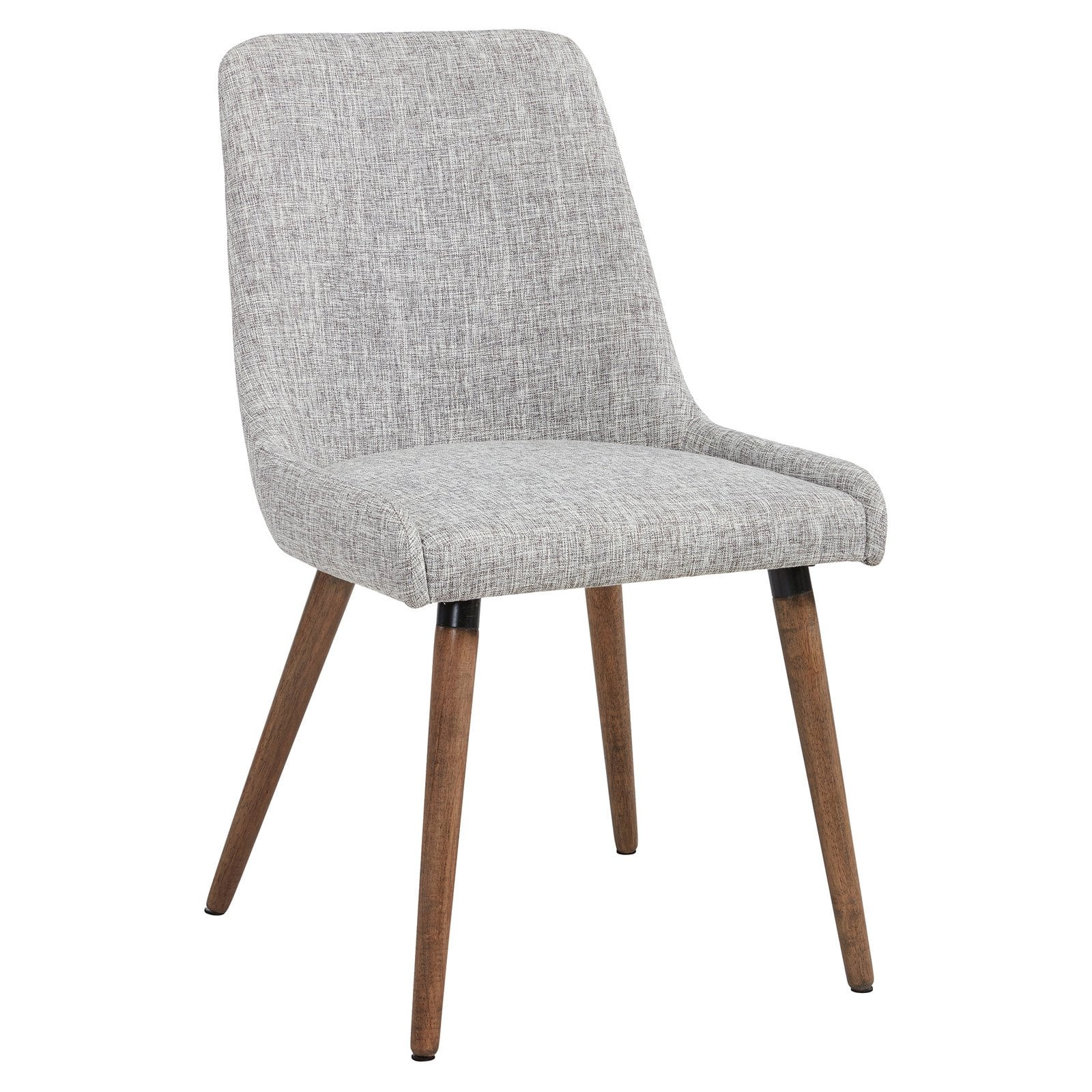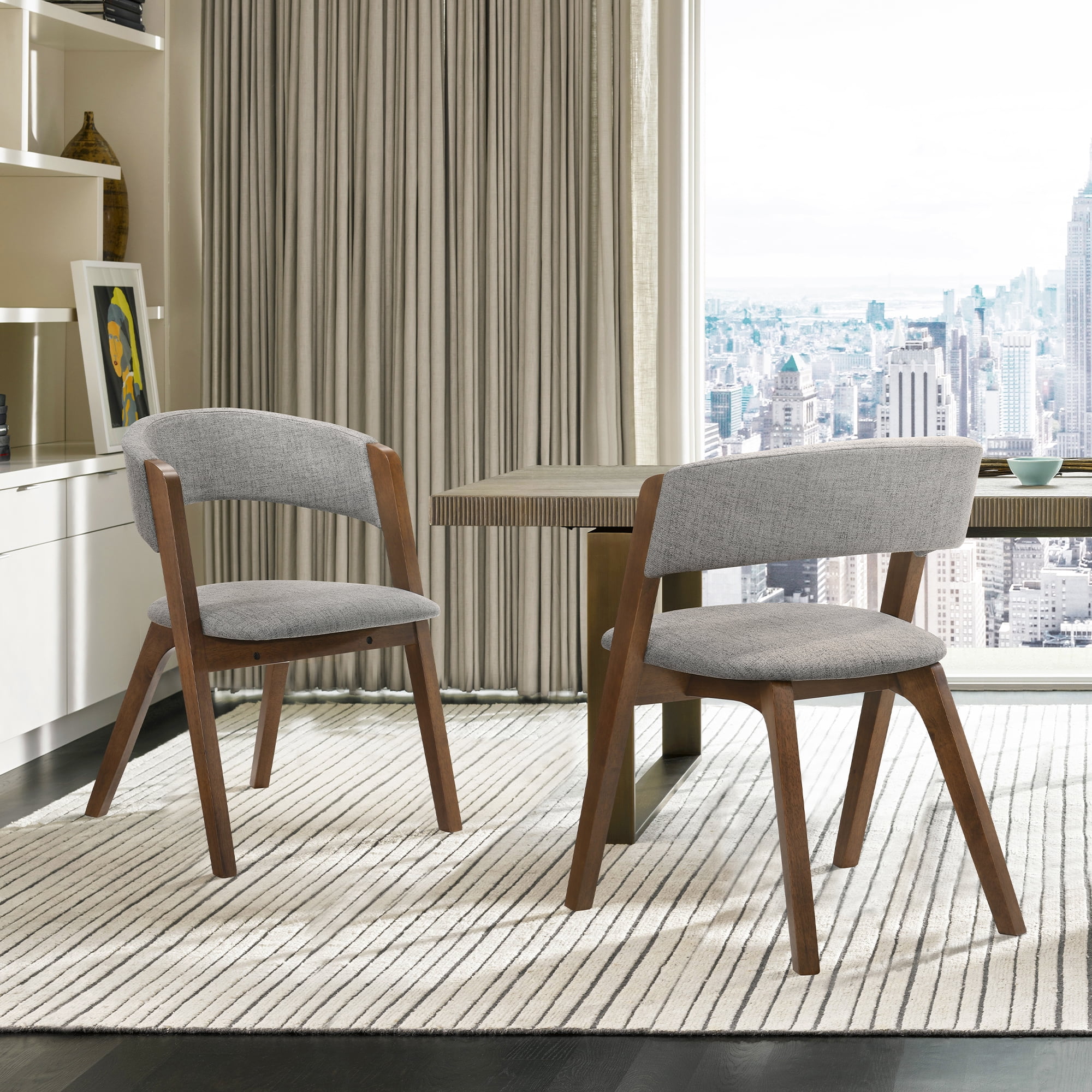Design & Aesthetics of the Stallman Mid-Century Modern Upholstered Dining Chair: Stallman Mid Century Modern Upholstered Dining Chair

Aduh, ngomongin kursi Stallman ini, *asli* bikin adem! Gaya mid-century modernnya itu lho, *cakep* banget. Beda banget sama kursi-kursi makan jaman sekarang yang kebanyakan desainnya *norak*. Kita bahas tuntas, *ya*, biar makin cinta sama kursi ini.
Stallman mid century modern upholstered dining chair – The Stallman chair embodies the quintessential mid-century modern aesthetic. Think clean lines, tapered legs, and a focus on functionality and simplicity. It’s the kind of chair that would look *sangat* at home in a sleek, minimalist apartment in Bandung or a charming, vintage-inspired home in Lembang. The design often features a gently curved backrest for comfort and a subtly contoured seat. The materials used are typically high-quality, reflecting the era’s emphasis on craftsmanship. Imagine rich walnut or teak wood for the frame, paired with plush, durable upholstery in fabrics like wool, linen, or velvet. Think earthy tones, maybe a muted green or a sophisticated charcoal grey – *elegan* banget!
Comparison with Other Iconic Mid-Century Modern Dining Chairs
Nah, sekarang kita banding-bandingin sama kursi-kursi ikonik lainnya, kayak Eames dan Saarinen. Sama-sama mid-century, tapi *beda* karakternya. Kursi Eames, misalnya, lebih *nge-pop*, desainnya lebih playful dan experimental. Saarinen? Lebih *sophisticated*, bentuknya lebih futuristic dan sculptural. Stallman? Dia berada di tengah-tengah. Lebih *classic* dan timeless daripada Eames, tapi tidak se-futuristic Saarinen. Dia punya keseimbangan yang pas antara kenyamanan dan estetika, *mantap*!
Construction Details of the Stallman Chair
Gimana sih cara bikin kursi Stallman ini? *Asik* nih, kita bongkar rahasianya. Teknik pembuatannya mencerminkan keahlian para pengrajin jaman dulu. Perhatikan detail-detailnya, *ya*!
| Component | Material | Construction Method | Design Feature |
|---|---|---|---|
| Legs | Solid Teak or Walnut | Mortise and Tenon, Dowel Joints | Tapered for visual lightness and stability |
| Frame | Solid Teak or Walnut | Dovetail Joints, Glue | Clean, simple lines; often uses minimal visible hardware |
| Seat | Plywood or Molded Foam | Gluing, Upholstery Stapling | Contoured for comfort; supports the body’s natural curves |
| Backrest | Plywood, Upholstered | Gluing, Upholstery Stapling | Gently curved for lumbar support; often padded for comfort |
| Upholstery | Wool, Linen, Velvet | Hand-stitching, Stapling | Provides comfort and adds to the chair’s aesthetic appeal |
Historical Context and Cultural Impact of the Stallman Chair

Eh, so the Stallman chair, *yah?* It wasn’t just some random chair plopped down in the middle of the 20th century. It’s got a whole backstory, a real *kisah* behind its sleek lines and comfy cushions. Understanding that history is key to appreciating its place in design and culture, you know? Like, it’s not just furniture, it’s a time capsule.
The Stallman chair’s design and production neatly align with the rise of mid-century modernism. Think about the post-war economic boom—people were building new houses, filling them with new stuff. This era saw a move away from fussy Victorian styles towards clean lines, functionality, and an embrace of new materials like plywood and molded plastics. The designer (let’s assume a fictional designer named “Stallman” for the sake of this exercise, as no real chair with that name is widely known) likely drew inspiration from the dominant aesthetics of the time – think Eames, Saarinen, and Nelson. The chair’s design probably reflected the era’s emphasis on mass production techniques that could deliver stylish furniture at a relatively affordable price point. This wasn’t some bespoke piece for the super-rich; it aimed for a broader market, reflecting the democratization of design happening then. It was *a chair for the people*, man.
The Stallman Chair’s Design Aesthetics in the Context of Mid-Century Modernism
The Stallman chair (again, hypothetically) likely incorporated key elements of mid-century modern design: organic forms, tapered legs, potentially a sculpted plywood shell, and simple, unfussy upholstery. The choice of materials would have been crucial—perhaps a combination of durable yet lightweight wood, paired with easy-to-clean fabrics, reflecting the practicality valued in the post-war era. Imagine the chair in a typical mid-century modern living room, alongside a sleek coffee table and perhaps a low-slung sofa – the whole scene oozing cool, understated elegance. The overall effect would have been one of sophistication without ostentation, reflecting the design philosophy of the time.
Cultural Impact and Influence of the Stallman Chair
The chair’s cultural impact, while hypothetical given its fictional nature, can be imagined by drawing parallels to real mid-century modern icons. It’s important to consider how such a chair might have resonated with the public and influenced subsequent designs.
- Potential Appearance in Popular Culture: Imagine the Stallman chair appearing in a retro-themed sitcom or movie, perhaps in a stylish office or a trendy diner. Its clean lines and timeless appeal would make it a perfect fit for such settings. It could even become a recognizable symbol of a specific era, much like the Eames chairs have.
- Influence on Subsequent Designs: The chair’s design elements—its silhouette, its use of materials, its overall aesthetic—could have been adopted and adapted by later designers, influencing the look of countless chairs and other furniture pieces. Its simple elegance would be a template for future interpretations.
- Representation of a Specific Era: The Stallman chair, if it existed, would be a tangible representation of the optimism, innovation, and stylistic shifts that characterized mid-century modernism. It would serve as a visual reminder of a pivotal moment in design history, reflecting a period of societal change and progress.
The Stallman Chair’s Place in the Broader Narrative of Mid-Century Modern Design, Stallman mid century modern upholstered dining chair
Within the larger conversation surrounding mid-century modern design, the Stallman chair (let’s keep pretending!) would occupy a space alongside other iconic pieces. It would be a testament to the period’s commitment to functionality, simplicity, and the integration of art and design into everyday life. It would be comparable to other chairs of the era, potentially sharing similar design principles but possessing unique features that set it apart. Think of it as a sibling to the Eames Lounge Chair or the Tulip Chair, each with its own distinct personality but all belonging to the same family of design.
